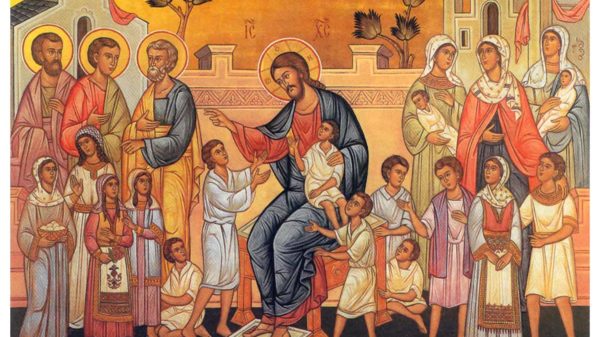May, 2000
Introduction
(Literature for children found in the Chivalry KidZone)
There are literally hundreds of Romance tales, starting with the accounts of Alexander and Joseph of Arimithea, the Carolingian cycle, progressing through the more familiar Arthurian mythos, and then transitioning into pseudo-histories with the historical romances of real-life heros such as Guy of Warwick and Richard Coeur de Lyon.
Another way to look at them is to follow them chronologically, from the chansons de geste through the early Arthurian literature and out into the rich branches that blossomed during the 13th – 15th centuries.
The short list below is only a sampling of this rich corpus of literature; but first seven works would give the student of medieval romance a basic grounding and would hopefully light the student’s interest in more in depth (and often interesting) tales. They were selected for their influence, their availability and readibility; often several versions can be had.
What this list is missing necessarily comprises more than this course contains. None of the classical tales pertaining to Alexander or Troy are represented, nor is the important Carolingian cycle. Italian and Spanish tales are likewise missing (such as El Cid and Don Quixote). The Welsh legends, upon which much of the Arthurian tales are predicated, are also omitted. Geoffrey of Monmouth, Wace and Laymon, authors who transitioned the tales into the mainstream are also interesting but excluded for space reasons alone. None of these works was left for reasons other than brevity; there are simply too many tales to incorporate effectively into a short list, so the list below must remain a restricted though hopefully interest-spurring set:
Examines the familiar image of the knight errant and the courtly ideals
Chretien wrote in the 12th century in a style that was closely followed in much of the literature to folow.. As an extraordinary poet, Chretien wrote for the newly emerging court audience, incorporating the ideas of courtesoie and courtly love into his knightly tales. Many of the later Arthurian relationships are first articulated by Chretien, so a reading of the whole series (they are very readable and relatively quick) gives a thumbnail of what is to come. While “Yvain” is perhaps the most well developed of his tales, any and all of them are worthy of inclusion into a short course on knightly romance.
Although any of the Chretien tales would do well, I like to start students here because there is a very clear presention of the familiar “knight errant,” the knight himself driven through diverse adventures; the pastoral settings are the template upon which the pas d’armes was originally formed, but the tale has far more depth–Yvain, the “Knight of the Lion” errs, is spruned by his wife but eventually recovers her through devoted service.
Morte d’Arthur by Sir Thomas Malory (English, 15th century)
A complete, mature telling of the whole Arthurian cycle
I could not do better than Norris Lacy, the noted Arthurian scholar, in summarizing what is known of Sir Thomas Malory,
“Everything that we know with certainty about the author of Le Morte d’Arthur is found in his book. He was called Thomas Malory, he was a knight and a prisoner, and he finished his work during the ninth year of King Edward IV’s reign (4 March 1469 to 3 March 1470). He loved hunting, tournaments, and chivalry, had read widely in Arthurian romance, and had access to a splendid collection of such romances while he was writing.”(1)
This love of things chivalric comes through plainly in the Morte d’Arthur. A complete, mature compilation of the Arthurian cycle, I believe this work was the main reason that the Arthurian myth survived in modern English literature. Although long and sometimes very dry (if you’re easily distracted don’t start with Malory), a student interested in the romantic history of knighthood would be well-served to read both volumes, (twenty-one short books), though a sampling can also yield valuable insights. Within Malory most of the templated “types” of knights can be found; the idealist, the ardent realist, the lover, and the rest. Steen Jensen, one of our St. George companions, likes to pose the question of our company knights, “Who are you in Malory?”; a fascinating and illuminating exercise.
Parzifal by Wolfram von Eshenbach (German, early 13th century)
Chivalry and the human condition
Ironically, this finest of the German poets may himelf have not been completely literate. Little is known about the author himself, although it is clear that he was not a clerk and his style is less than suave, indicating less facility with the language than one might expect from a poet whose work has transcended his time and become generally accepted as great literature.
Parsifal is a retelling of an earlier Chretien tale, though Wolfram includes a magnificent array of insights into the human condition. Certainly not a poet’s poet, the tale nibbles at the grim reality of life and shows how chivalry was believed to be a way of rising above human frailty to achieve grace. It does this not from the religious perspective, as does the Quest del Saint Graal, but from a mostly secular and decidedly compelling perspective.
Tristan & Iseult by Gottfied von Strassbourg (German, early 13th century)
Masterful language, examines love as a key motivator
Interestingly, there seems to have been love lost between Gottfried and Wolfram von Eshenbach; Eshenbach is unnamed, though obviously sharply critique’d in a famous passage within Tristan and Isolde, a dark but compelling retelling of a 12th century version done by Thomas d’Angleterre. While Gottfried’s work has been called difficult, the tale itself broke new ground in its exploration of love as a transcendent force. He introduced the lover’s cave, incorporating both the ideas of courtly love introduced to the Tristan legend by the aforementioned Thomas but taking the tale further, suggesting that love could both separate the lovers from their society and raise them to a new level of profound communion, much in the way that Eshenbach’s spiritual questing does. An excellent tale and easily accessible in translation.
Gawain and the Green Knight, Anonymous (English, 14th century)
Exceptional language and depth, in Middle English
Even given its short length–a mere 53 pages in the Marie Borroff translation commonly used in college coursework–this piece compacts much of the chivalric ideal into a tale that can be read many times–it might even be called “multi-epiphanatic.” A new realization often strikes the reader each time through the text. Not only is this an iconographical work demonstrating the power of language, (it is also contemporary with Chaucer), but its richness defies quick analysis. Gawain is treated kinder here by the English poet than he was normally in France, where is amorous and often impetuous nature delved him into trouble again and again, but perhaps it is this very nature that singled him out for his achievement of grace even in the face of his multiple follies.
The Quest for the Saint Graal, Anonymous portion of the Vulgate cycle (French, 13th century)
Salvation through the Grail from the Church perspective
Although the authorship of this work is unknown, the Quest for the Saint Grail gives the student of Arthurian literature a quick glimpse into the ecclesiastical perspective on matters of knighthood and salvation. In addition, it represents a transitional piece–dating from the early 13th century–marking the transition of secular writing from verse to prose. The whole Vulgate cycle is an ecclesiastical retelling of the Arthurian legends, a quasi-historical advance of the literature that recalls Geoffrey of Monmouth’s ‘certain little book’ cross-bred with Chretien de Troyes and finished with a highly christianized prose polished to a high literary gloss. Certainly not the easiest work to read, even in translation, but a worthy encapsulation of the importance which the church placed on the whole corupus of Arthurian literature as a mechanism for change.
Song of Roland, Anonymous (French, 11th – 13th century (dating varies))
Very early “proto” chivalry, before the ‘civilizing’ infuences of the 12th century
While certainly not a “chivalric” romance, and nearly contemporary with the Chretien works above, the Song of Roland does present an interesting, clear picture of the “proto-knight” in Roland, chief of Charlemagne’s rear-guard. Roland exemplifies the rough warrior; loyal without question to his liege lord, courageous even in a hopeless cause, and preux beyond measure. These three virtues, common to all warrior cultures, formed the basis upon which the romances added a host of other, more ‘civilized’ virtues. Not only is this an important story that all chivalric students should be familiar, but it is often very compelling in translation, and exceptionally easy to obtain.
Guy of Warwick, Anonymous (French, versions from the 13th – 15th centuries)
A “historical” romance of legimitization
That the romance literature transcended mere storytelling and was incorporated into the pseudo-histories of real people can be most accessibly seen in the many versions of the 13th century tale Gui de Warwick. It could better be seen, arguably, in the metrical quasi-biography Le Chanson de Guillaume le Marechal, the life of the famed William Marshal, but that is available, alas, only in French and then only in a very few libraries.
The Guy of Warwick tale, certainly far less known than any other of the above-mentioned works, attempts to catalogue and romanticize the life of an ancestor of Wigod of Wallingford, cup-bearer for Edward the Confessor. Similar tales were done for other nobles, bridge works that attempted to glorify living families by tying them to the great deeds of their ancestors.
Influential 19th – 20th century interpretations
Ivanhoe by Sir Walter Scott
Idylls the King, by Alfred Lord Tennyson
Once and Future King, by T.H. White
The Sword at Sunset, by Rosemary Sutcliff
(1) Lacy, Norris. The Arthurian Encyclopedia (1986 edition by Peter Bedrick Books) entry on Sir Thomas Malory, p. 352.
Copyright the author, 2000 A.D.












